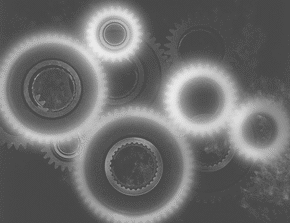

Forensic Engineering Inc. News and Events
Recent contribution to BEM OAT article:
Forensic Engineering, Inc. presented the following paper at the American Academy of Forensic Sciences 65th Annual Scientific Meeting in Washington, DC, 2013.
Crashworthiness Investigation of Modern Sedan Bumper Designs
Scott Anderson, BS*, Forensic Engineering, Inc., 1005 N. 50th Street Ste 4, Phoenix, AZ 85008
Mark Pozzi, MS, Sandia Safety Sciences, 2 Marietta Court, Suite A, Edgewood, NM 87015
Todd Saczalski, TKS Consulting, Inc, 140 Calle Irena, Sedona, AZ 86336
David Bosch, Phd, Forensic Engineering, Inc., 1005 N. 50th Street Ste 4, Phoenix, AZ 85008
Dean Jacobson, Phd, Forensic Engineering, Inc., 1005 N. 50th Street Ste 4, Phoenix, AZ 85008
Those attending will be educated about the state of the art in sedan bumper design as well as the history of sedan bumper design with specific focus on how it relates to crashworthiness in rear end collisions. For a complete picture, state of the art and historical rear clip design will also be discussed. Alternative designs will be presented. The importance of materials testing and the usefulness of computer simulations to failure investigations will be emphasized through examples of specific cases where they proved valuable.
Automotive safety will be impacted by this presentation by helping those in attendance recognize shortcomings of some current bumper designs. Identifying these problems and educating others about it will serve to create a driving force towards solving them. This presentation will educate other investigators about issues that have been identified so that they can more easily identify them in their own crash investigations.
The material used for modern bumper beams is typically either a polymer and glass fiber composite or high strength steel. An expanded polymer "energy absorber" is attached to the outer face of the bumper beam to mitigate the effects of lower speed/lower energy impacts. Glass Mat Thermoplastic (GMT) is currently a very popular composite used for the manufacture of bumper beams. It is reported to cost 15% less than a steel bumper beam and weigh 25% less than steel. The trend of moving away from steel and toward composites like GMT has been driven by the IIHS testing and reporting of vehicle repair costs for bumpers in low-speed crash tests. GMT can deform a considerable amount and still remain in the elastic region, meaning that impacts of a low enough speed will not cause any permanent plastic deformation, and the bumper beam will not need to be replaced which lowers the repair costs.
Although the material deforms elastically by a great deal, when it advances past the elastic region it fractures and any ability for the beam contribute to crashworthiness has been lost. Computer simulations and real world crash testing has shown that at higher speeds composite bumper beams fracture early. The simulations and test have also shown that steel bumper beams great plastic deformation without fracture allows them to continue to absorb energy in high speed collisions and also to aid in capturing, containing, and/or directing the impacting vehicle so that intrusion into the impacted vehicle is mitigated.
Simulations showed that production composite bumper beams can fracture even at impact speeds of 5 mph. Alternative designs of HSS bumper beams with a reinforced rear clip were simulated which were very effective at reducing intrusion at higher speeds.
What is Forensic Engineering?
Forensic engineering is the investigation of materials, products, structures or components that fail causing personal injury or damage to property.
... read more

All Rights Reserved. Copyright: Forensic Engineering Inc, Phoenix, Arizona
